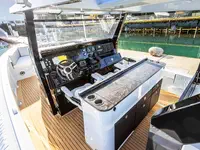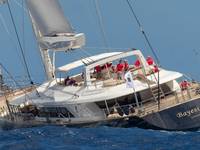HamiltonJet LTX Waterjets Suited for Medium-Speed Propulsion
HamiltonJet’s latest innovation – the LTX waterjet – has moved from initial design to commercial reality, with the first LTX36 jets commissioned on a 20-m passenger ferry in The Netherlands.
The vessel Inselexpress 2, built by Next Generation Shipyard, is powered by twin LTX36 jets driven by Volvo D8 engines (313 bkW) via ZF gearboxes.
During trials, the ferry comfortably met its predicted top speed of 23.5 knots, validating the LTX’s technical promises and its potential to reshape propulsion performance in the 20–30 knot range.
Originally launched as a new design in 2023, the LTX series is HamiltonJet’s step into the low- to medium-speed market traditionally dominated by propeller systems. The jets – now commercially available in LTX36 and LTX53 models – were inspired by nature’s most efficient swimmer: the moon jellyfish. Travelling via a low-velocity jet of water, the jellyfish achieves exceptional efficiency through a large nozzle, minimal energy input, and a finely tuned natural design.
HamiltonJet drew from this biological model to develop a propulsion solution with similar attributes – optimized nozzle size, reduced jet velocity, and a lightweight structure. The result is a system that delivers impressive thrust, high maneuverability, and energy efficiency, while remaining robust and adaptable to a range of vessels.
“The LTX is a game changer,” says HamiltonJet Managing Director Ben Reed. “It offers propeller-like efficiency at lower speeds while maintaining all the advantages of waterjet propulsion – shallow water operation, safety, and unmatched maneuverability.”
 Image courtesy HamiltonJet
Image courtesy HamiltonJet
Key performance highlights include:
●Up to 40% more bollard pull than comparable jets, enhancing station-keeping and acceleration
●Low-loss steering systems that reduce fuel consumption and maintain efficiency in tight turns
●A compact, low-profile installation footprint, enabling late-stage fit-out and compatibility with electric and diesel powertrains
●Optimized hydrodynamics that reduce input power and maximize propulsion efficiency










